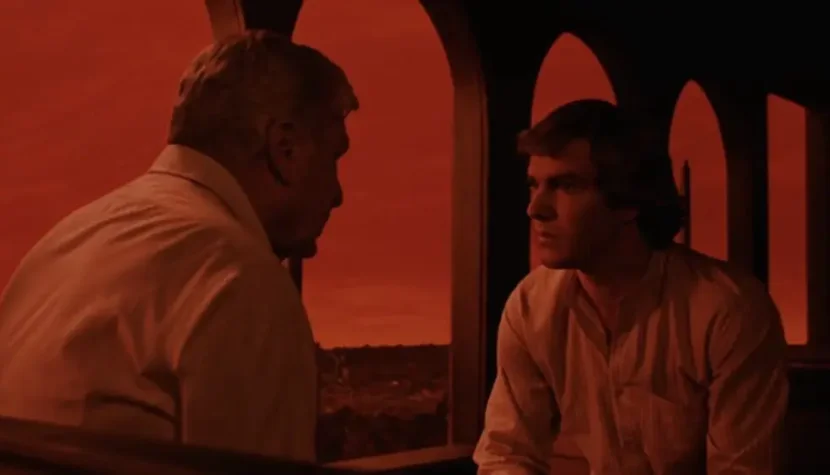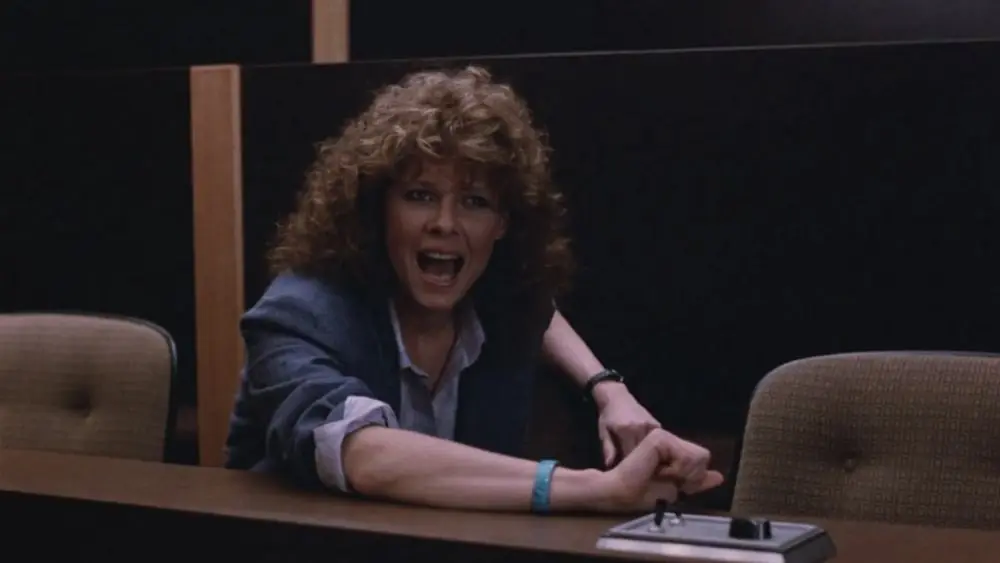DREAMSCAPE. The science fiction that preceded Inception and The Cell

“Dreamscape” – a lost gem of adventure science fiction from a decade rich in such productions.
Young telepath Alex Gardner was once a research subject for esteemed scientist Paul Novotny, but he gave up on developing his psychic talents, instead wasting them on chasing women and betting on horse races. One day, Alex finds himself at a university campus where Novotny’s team is working on a system that enables human minds to connect during sleep. The experiments, funded by the U.S. government, aim to effectively diagnose and treat sleep disorders (especially nightmares). Novotny manages to convince Alex to join the program, and soon Alex is helping a distraught husband tormented by nightmares about his wife’s infidelity, as well as a disabled boy haunted in his dreams by a terrifying snake-man. A government agent, Bob Blair, is observing the scientists’ work, intending to use this groundbreaking technology to assassinate the President of the United States.

According to American writer Roger Zelazny, “Dreamscape” was based on one of his original ideas. In the early 1980s, Zelazny sold a story concept to 20th Century Fox, which was partially based on his 1966 novel “The Dream Master” (an expansion of his novella “He Who Shapes”). However, Zelazny was not involved in the film’s production, so his name doesn’t appear in the opening credits. The screenplay was written by David Loughery, Chuck Russell, and Joseph Ruben, with Ruben also taking on the role of director. Dennis Quaid, then an emerging film star, was the first and only choice for the role of Alex, while the supporting cast included Max von Sydow (Novotny), Christopher Plummer (Blair), Kate Capshaw (DeVries), and David Patrick Kelly (Glatman). Despite mixed reviews, Ruben’s film was a commercial success, grossing $12 million on a budget half that amount.
“Dreamscape” is a somewhat forgotten film, overshadowed by the success of another production on a similar theme that premiered three months later: Wes Craven’s “A Nightmare on Elm Street” (1984). Interestingly, both films feature a character with blades on their fingers, although this may be a coincidence. And although Ruben’s film isn’t strictly a horror, it incorporates horror elements and blends them with political thriller, science fiction, and adventure action cinema. At first glance, the plot may seem absurd, but the film provides plenty of guilty pleasure because it’s solidly executed. The dream sequences, especially, are fascinating through the lens of Brian Tufano, inspired by Robert Wiene’s “The Cabinet of Dr. Caligari” (1920) and surrealist art. The practical special effects may seem dated today, but forty years ago, they must have been impressive, and even now, in an era saturated with CGI, they retain a unique charm.

The film often requires a suspension of disbelief, but it’s unpretentious and infused with a captivating, dreamlike atmosphere typical of the 1980s, created not only by the cinematography and set design but also by Maurice Jarre’s electronic score. “Dreamscape” stands alongside other productions of the decade that were often discovered in video rental stores, like Ken Russell’s “Altered States” (1980), Douglas Trumbull’s “Brainstorm” (1983), and Joel Schumacher’s “Flatliners” (1990) (don’t be misled by the release date of the latter: it was filmed in 1989, and its aesthetic is pure 80s). It’s also worth noting that the concept of entering another person’s mind in Ruben’s film predates “The Cell” (2000) by Tarsem Singh, “Inception” (2010) by Christopher Nolan, and “Vanishing Waves” (2012) by Kristina Buožytė by many years. It’s hard to shake the impression that these creators drew heavily from “Dreamscape”.
PS: In one scene, Novotny tells Alex about the indigenous people of Malaysia—the Senoi tribe, who believe that the dream world is as real as waking reality. In 1981, American trumpeter Jon Hassell released an album, “Dream Theory in Malaya”, inspired by these beliefs. It’s worth a listen.

